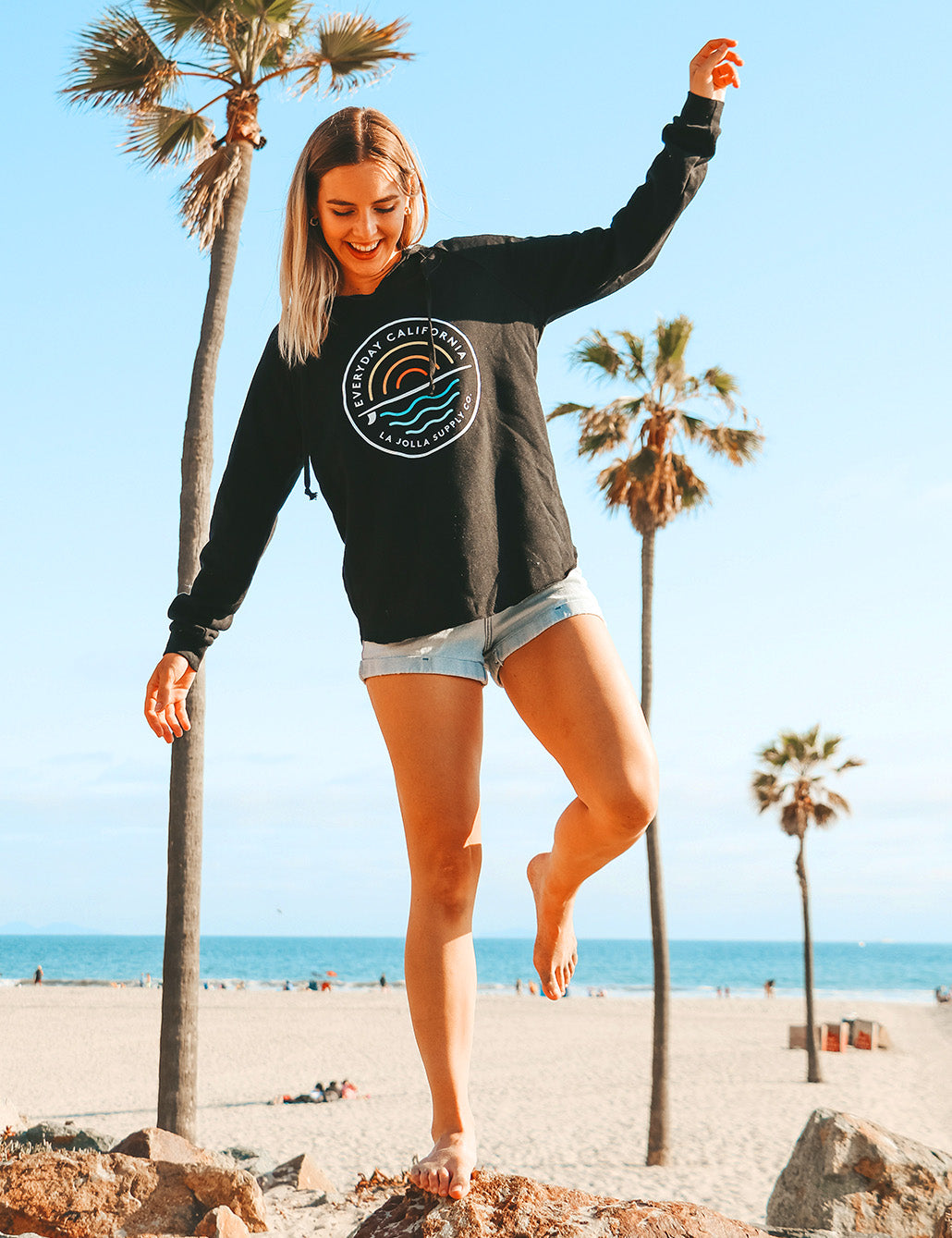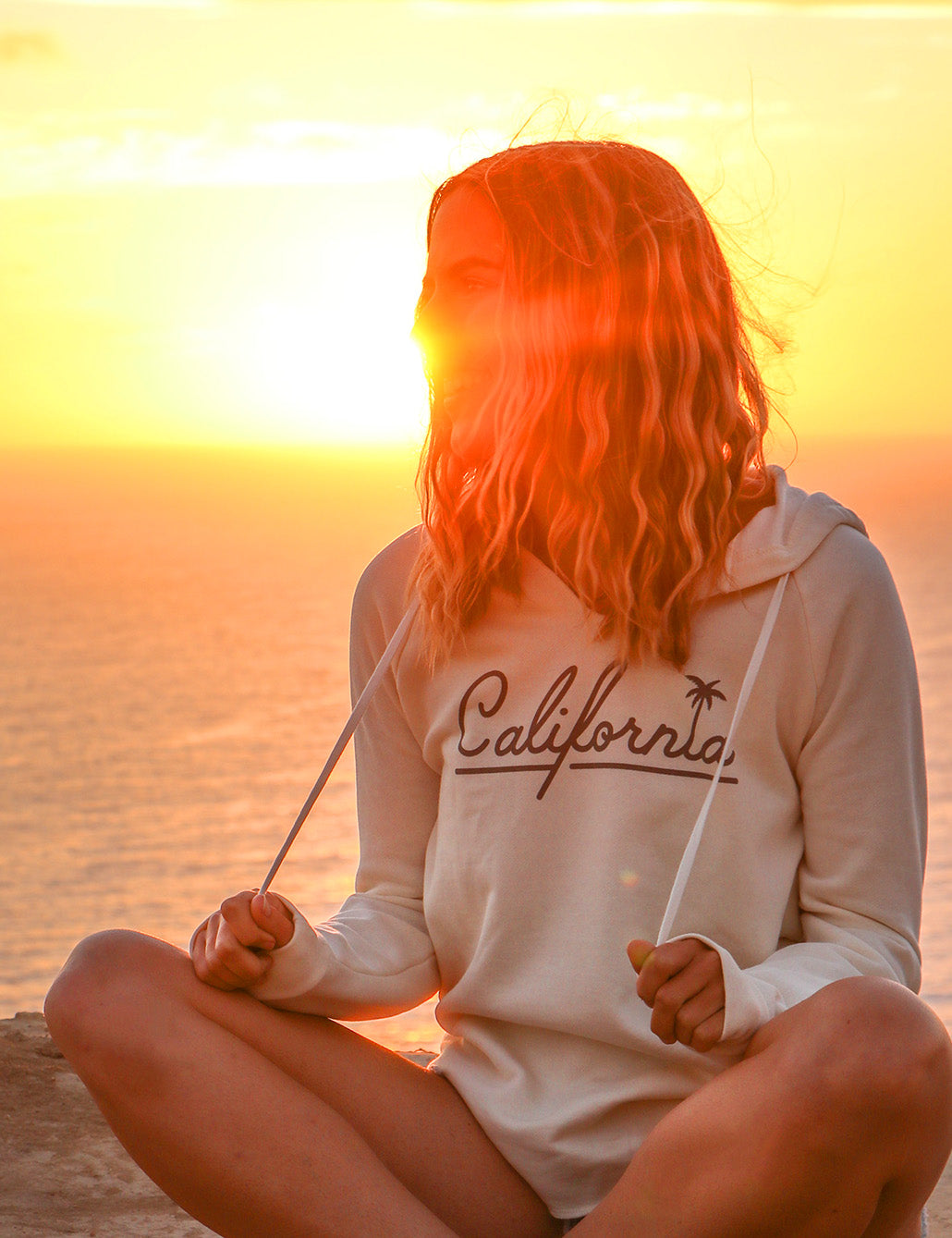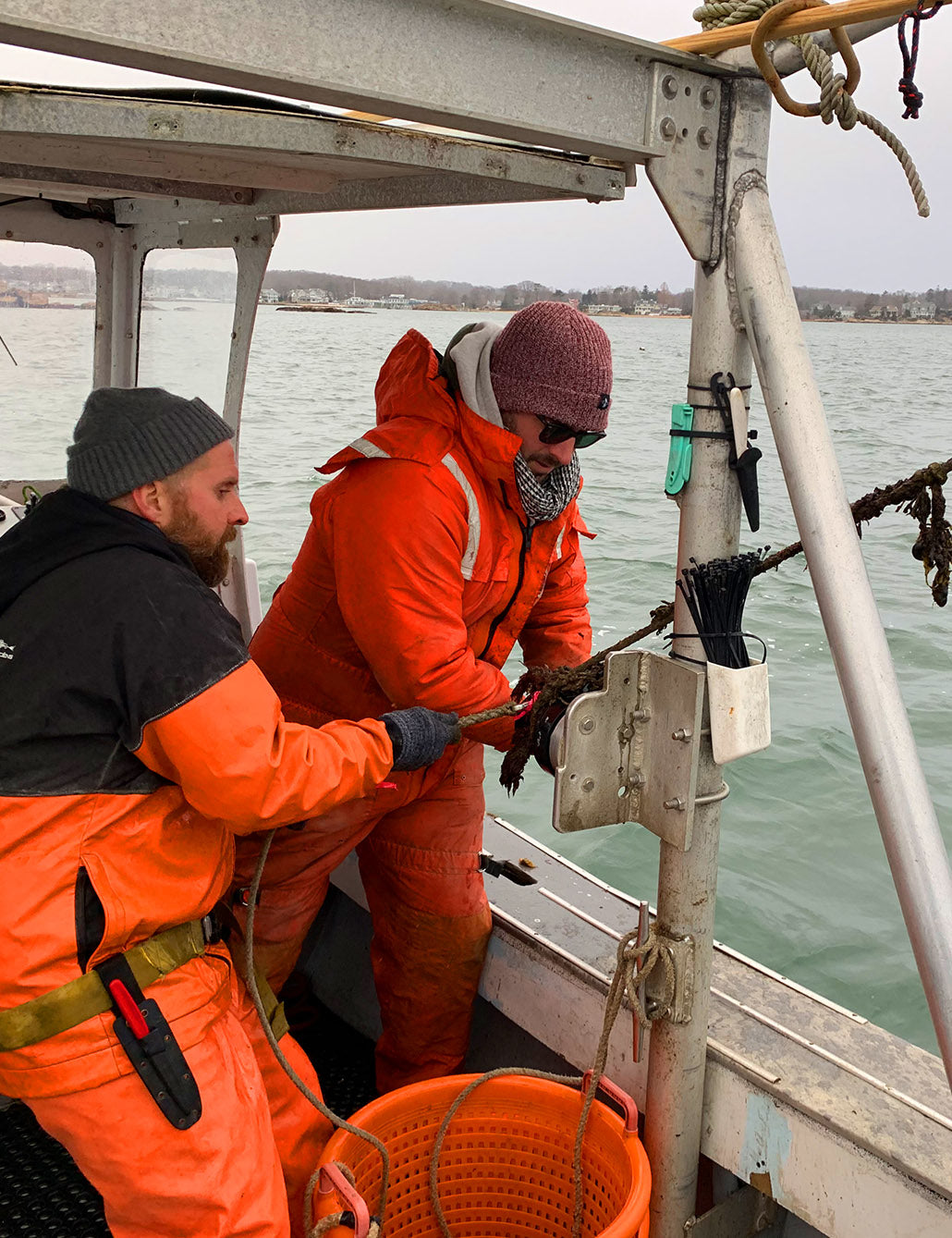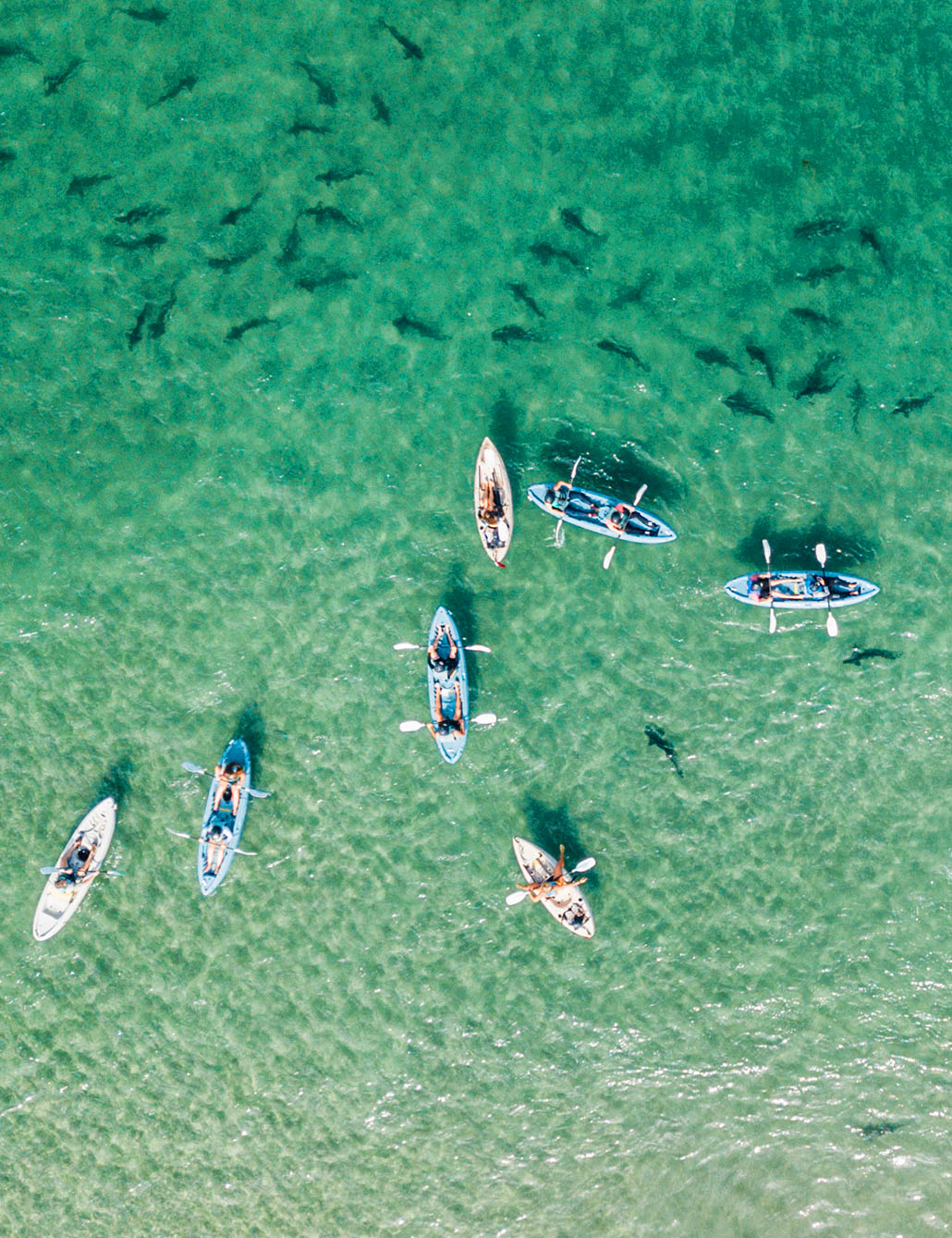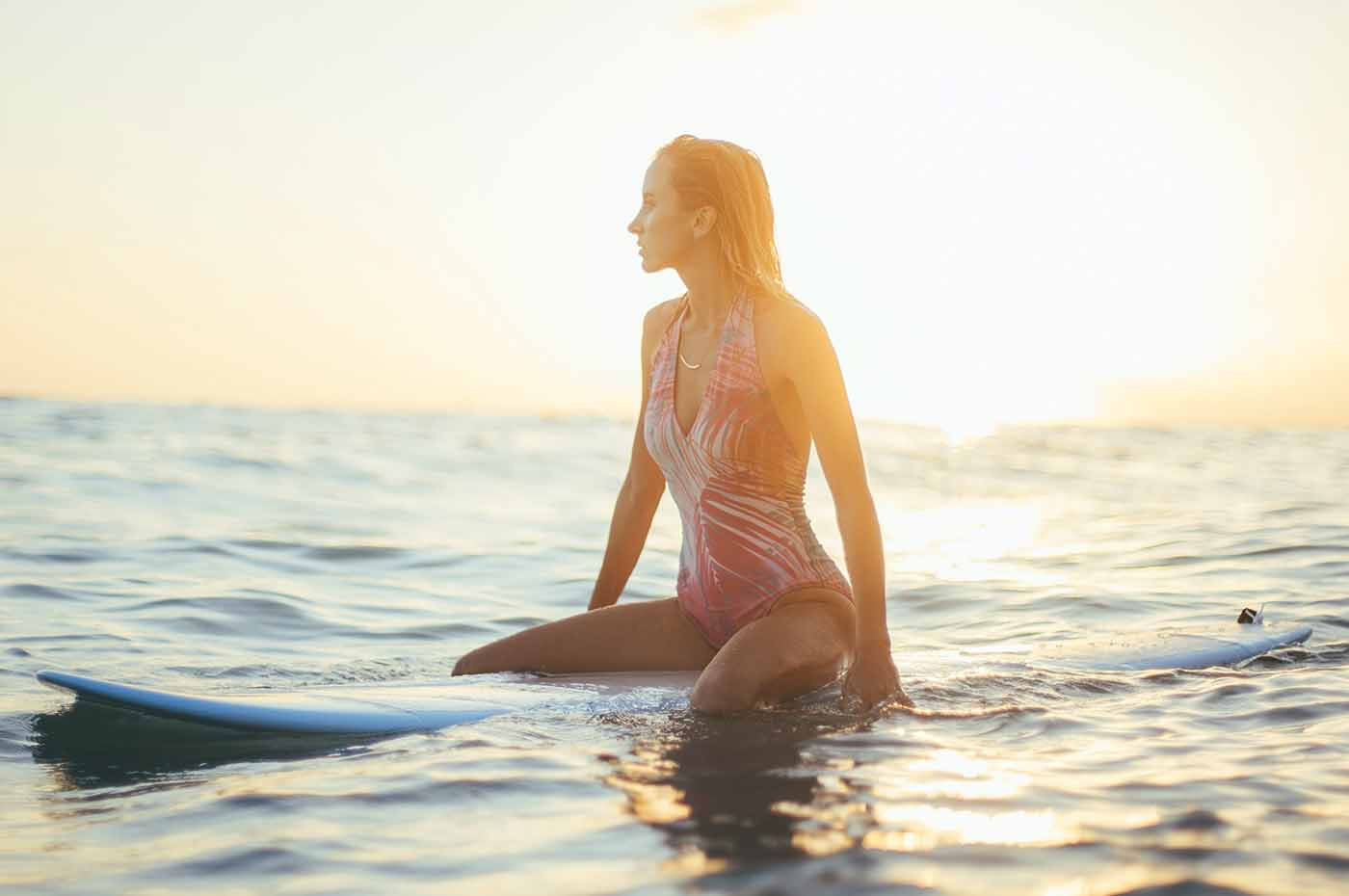The beach is a great place to spend the day. The refreshing sea water and the view of the waves can make for an unforgettable experience.
Sunscreen is essential when you’re spending time in the sun, but traditional sunscreen is bad for the marine life you go out to enjoy. It doesn't have to be that way!
Here are some ideas for different kinds of sun protection, and sunscreen that will keep you AND the environment protected.

How Does Sunscreen Hurt Marine Life?
The chemical ingredients in traditional sunscreen wear off in water and build up in the sea.
When looking for the best skin protection from the sun's harmful rays, you also have to make sure that you're thinking of the ecosystems that you're enjoying. If we don’t start tackling pollution in the ocean, there won’t be any coral reefs left to see. In fact, there may not be much marine life left at all!
Coral bleaching is one of the most well-known effects of water pollution. Toxins build up in the water and impact the way coral can take in nutrients. The coral expels the algae that live inside their tissue in a reaction to the chemicals, and, because the algae are the substance that gives the coral color, the coral turns white.
White or transparent coral is a sign of stress, indicating that the reef’s environment is contaminated and the coral is not getting the nutrients it needs.

Sunscreen in the ocean doesn’t just affect coral reefs. Other organisms that can suffer from polluted water include: Green Algae, Mussels, Dolphins, Fish, Sea Urchins and more.
Chemical sunscreens don't just harm marine life - The chemicals in sunscreen can lead to a drop in fertility rates, birth defects, and other health issues in humans.
In green algae, sunscreen chemicals can impair photosynthesis, which can have a truly catastrophic effect on countless organisms in the sea.
Remember, our oceans are interconnected and complex ecosystems. A chemical that affects one organism will have a knock-on effect, possibly leading to something far more catastrophic than we could imagine today. If the chemical ingredients in your average sunscreen are hurting the environment, how might they be impacting you?

The Importance of Sunscreen
No matter what your skin type is, sunscreen is important to protect it from the sun.
UV rays are not just harmful to your skin, they can also cause cancer. Some of the most common types of cancer that come from UV exposure are melanoma and non-melanoma skin cancers. These can be avoided with the right use of sunscreen.
There are many different brands on the market, but you should still do your research before buying one.
What to Look For When Buying Sunscreen
Sunscreen is a crucial component of any beach day. Not only will it protect your skin from harmful UV rays, but it can also help to reduce the risk of getting sunburned or developing wrinkles and age spots later on.
However, when you’re trying to find the right sunscreen, there are many things to consider, including:
Type: Mineral vs chemical
SPF: 20-50+
Cost: Low end ($5-$10) vs high end ($20+)
Skin type: Dry/sensitive vs acne prone
Features: Waterproof, sweat resistant, fragrance free, etc.
Your sunscreen should be free of harmful substances, protect against heavy sun exposure/ UVA and UVB rays, be suited for sensitive skin, be water-resistant, and Reef Safe.
Reef Safe sunscreen is a good option for those who are spending time in the ocean. It’s water-resistant, so you can be confident that it will last as long as you need it to. The sunscreen also doesn’t use any parabens or synthetic fragrances, OR oxybenzone, which is a chemical that has been known to harm the coral reefs.
Protection Levels and Features:
UVA and UVB Protection
Most sunscreens indicate how protected you are against sun rays. It is best to use a sunscreen that is at least SPF 30 for full protection. The best surf sunscreen provides a physical blocker for the most protection.
Water Resistence
If you’re going to be surfing, you need a water-resistant sunscreen. These sunscreens are usually sweat and water resistant for up to 80 minutes.
The active ingredients in this type of sunscreen are usually zinc oxide or titanium dioxide, which work by reflecting the sun away from your skin.
Chemical vs Mineral
Sunscreen has two main types: chemical or mineral. Chemical sunscreens have a lot of active ingredients that can be irritating for some people. They’re also more likely to cause allergic reactions for those who are sensitive to them.
Mineral sunscreen, on the other hand, doesn’t use chemicals but instead uses zinc oxide or titanium dioxide as its active ingredient. These are more gentle on the skin and don’t cause as many reactions as chemical sunscreens do. But they can leave a white film over your skin which may not be ideal for everyone.
Nano zinc oxide sunscreen is a good option for people who are looking for a lightweight, natural sunscreen. Nano zinc oxide is made up of microscopic particles that don’t cause the same kind of skin irritation as other sunscreens can. It provides broad spectrum UVA and UVB protection and is good for sensitive skin.

Sunscreen Application Tips
Sunscreen application is a crucial component of sun protection. Applying sunscreen correctly will increase the effectiveness of the product.
It’s best to apply it 30 minutes before going into direct sunlight and then reapply every 2 hours or after swimming or sweating.
Apply a thin layer of sunscreen over your entire body, including your face and neck, paying special attention to areas that are often missed like the back of the neck and inside your ears.
Remember to use enough sunscreen - you should use about 1 ounce (2 tablespoons) for your whole body if you are just applying once. If you need more than one application, make sure to be generous with each layer.

Sun Protection
Sun is the main cause of skin cancer. UV rays damage your skin and can lead to cancer. The most common are basal cell carcinoma, squamous cell carcinoma, and melanoma.
To avoid this, it’s important to protect your skin with a good sunscreen that blocks both UVA and UVB rays.
Keeping safe in the sun is still important. In no way should you decide to simply leave out the sunscreen. Try and practice other ways to keep yourself safe:
Wear a sun hat or use a sun umbrella. This keeps the sun off your head. A sun umbrella can provide invaluable shade, especially on a hot, crowded beach.
Find shade during the hottest part of the day. Between 10 am and 2 pm is the hottest part of the day. The sun is at its highest and hottest, and you’re more likely to burn at this time or suffer from heat stroke or dehydration.
Wear reef-safe and ocean-friendly sunscreen. Wearing sunscreen is still a crucial way of protecting yourself from dangerous UV rays. Remember to put on the recommended amount of lotion, and follow the instructions. You’ll likely need to reapply your sunscreen during the day, especially if you’re going in the water.
Wear UV sunglasses. As sunscreen can't protect your eyes, you should invest in some kind of UV sunglasses. Regular sunglasses often don’t filter out the dangerous UV rays.
Cover up. One of the best ways to prevent sunburn is to cover up. Wearing sun t-shirts, long sleeves, or leggings will protect your skin from UV rays. Of course, it’s sometimes too hot to wear a lot of clothes. However, if you’ve experienced a serious burn before, it might be wise to cover up that area. For example, if you’ve had a serious burn on your shoulders, wearing a t-shirt that covers your shoulders can prevent another burn in that area.

Everyday California Reef Safe Sunscreen
Reef-safe sunscreen is eco-friendly sunscreen specially designed to give you the best UV protection possible, without causing damage to marine life and coral reefs.
What makes a sunscreen reef-safe isn’t so much which ingredients it contains - it’s more about which ingredients aren’t used.
It’s important that the active ingredients in sunscreen work to protect your skin from UV rays. However, these ingredients don't need to be harmful to the environment. Other ingredients and products can be used to achieve the same effect without damaging the coral reefs. Here is a list of ingredients you should avoid in a sunscreen:
Oxybenzone, Homosalate, Octinoxate, Octocrylene, Parabens, 4-methylbenzylidene camphor, PABATricoslan, Microplastic (some sunscreens use exfoliating beads), Nano-sized or nanoparticles of zinc and titanium (this means that the particles will be too large for coral to absorb).
When you’re shopping for sunscreen, look for mineral-based sunscreens containing zinc oxide and titanium dioxide, as these are generally safe for use. Reef-safe sunscreens are often marketed that way - you’ll probably notice “Reef-safe” somewhere on the packaging.
However, since the term “reef-safe” or “reef-friendly” isn’t FDA regulated, a sunscreen legally marketed as “reef safe” may not actually be reef safe. You should always check the ingredients list for harmful chemicals, like the ones listed above.

Final Thoughts
The beach is a great place to spend the day. But when you're going to be in the sun all day, it's important to protect your skin with sunscreen.
There are a lot of options out there that won't leave you feeling like there is a layer of sunscreen on your skin. If you're looking for something more natural, look for zinc oxide based products.
No matter what type of sunscreen you choose, make sure to reapply as needed and stay out of the sun during peak hours!


